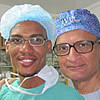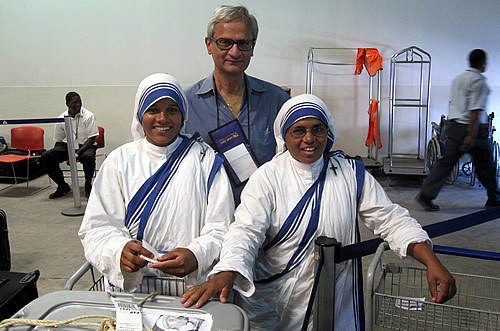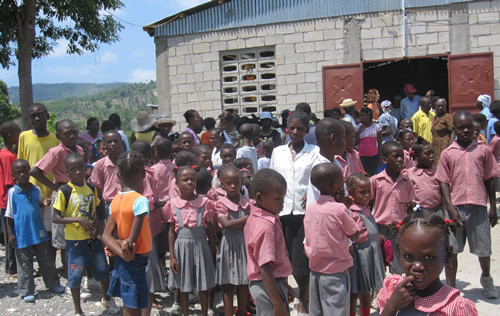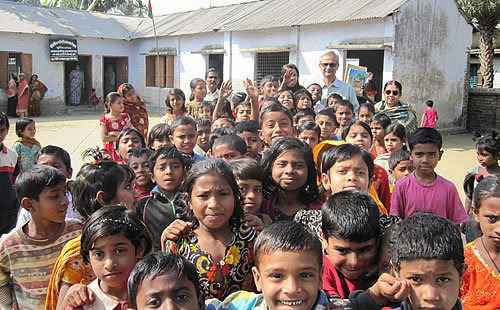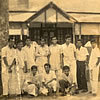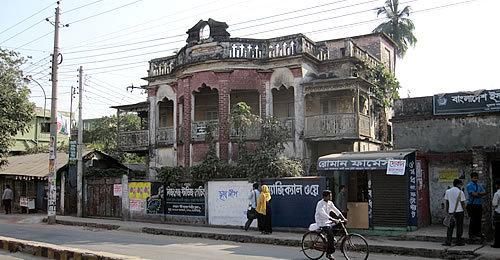“Leaves get yellow. The tree puts out fresh roots and makes them green. Why are you so content with a love that turns you yellow?”
– Jelaluddin Rumi
Afghanistan, the birthplace of the Sufi mystic poet Rumi has always fascinated me with its history and intrigued me with its decades of mayhem and catastrophe. So when Zia, the Afghan-American husband of our resident, Erica, invited me to join him in starting the Pandora Foundation for Health and Education in Afghanistan, I readily complied.
With plans to make an onsite assessment, I arrived in Kabul on December 9th. The airport bus dropped me at the main security gate where I was relieved to find myself in the welcoming arms of Zia and his two brother-in-laws, Sharif and Hamdulah. They both work for International NGOs and share a rented house with their families.
We arrived at the house around midday, the air was already turning gray from fog and smoke. I shared the room upstairs with 3 other adults, sleeping on pads arranged along the walls. There was a wood burning stove in the middle and quilts to fight the bitter cold.
Dinner placed on a vinyl sheet on the floor. The meal was made up of flat breads, several plates of rice with meat, some vegetable dishes and salad. We ate together, with everybody dipping and picking up food from the dishes. To drink, a dilute concoction of tea, which is also served throughout the day.
The food was carefully prepared by the women and brought up by the boys. I heard the whispered questioning behind the curtains and felt their sisterly concern for my food habits… but, I never saw the face of an adult woman throughout our stay. This was extremely distressing for me.
Sharif took me downstairs to the small courtyard with gutters to urinate in. On one corner there was a doorless room with a squatting hole. The stench was overwhelming. Because there is no running water in most of the country, it is difficult to clean floors and you have to be careful not to step in any stray deposits. I decided to consume minimal food and drink to avoid the urge to need the facilites.
Early next morning, before dawn, we left for the six hour drive north to Zia’s village of Baghlan. Even with three layers of cotton, wool and velour I was terribly unprepared for the bitter cold. Sharif took the coat off his back and saved my trip with his Afghan gesture of kind hospitality.
The paved road was constructed by the Russians in the 80s. It ultimately forks off to Kazakhstan and Tajikistan. On both sides I could see the beautiful snow covered peaks of the Hindu Kush range. At 8,000 feet we passed through the Salang tunnel and started our descent towards Baghlan.
We went straight to the house of Zia’s cousin. He is the village community leader, a five-year term. Amidst the warmth radiating from the wood burning stove we had more tea followed by lunch, similar to the previous day. Once again there were no womenfolk to be seen and the toilet was a squatting hole in an adjacent room, a gunny sack curtain for privacy. I was told that people, including women, mostly go in the open fields.
Later in the afternoon, the village elders arrived for a discussion about our project. Sharif did a wonderful job of translating and conducting the meeting. I found the elders quite animated and involved in their discussions and questions to me.
But, again, you did not find any women, even in their head to toe Burkha, joining us with their suggestions. Especially, when these problems are mostly theirs to deal with and suffer through. Instead it was the men making all the decisions… the ones who have dominated and created this backwardness for half a century.
It was like deciding on diagnosis and treatment without any input from the patient. To me, very frustrating and upsetting.
The elders continued their discussion and came back with suggestions on construction sites. There was a suitable piece of land belonging to Zia’s family, but his patriarch Uncle felt that such a central location would cause indecent exposure for the girls. He would rather have the girls walk three miles to another school site than offer the convenience of a nearby school.
That night I was to stay at the lovely house of Basir, another brother-in-law of Zia. As we were walking for about a mile I was boiling with rage about the lack of women’s rights. I told my companions:
“… gentlemen, you talk about women’s emancipation, education and empowerment, but it is sheer hypocrisy that you don’t consider giving them the decency of an in-house toilet.”
In the evening I sat down for dinner. Basir’s children brought the dishes from their mother, who was whispering instructions to them from behind the curtain. Perhaps because I had been nurtured by the love of my three elder sisters, I found it distressing to be unable to offer a simple gesture of gratitude to my Afghan sister.
Next morning we went to assess the proposed construction site. The local elders were enthusiastic and sympathetic about the plight of the girls and promised to provide assistance in construction.
We then went to visit the local hospital. I roamed around the immunization clinic, outpatient department, operating room, radiology, pediatric wards and other departments. It was a reasonable structure, though the relatively empty beds were disconcerting. We then met the surgeon and had a formal meeting with the hierarchy of medical staff who were excited about our commitment to improve their healthcare delivery. We made a list of items to be brought in to enhance the service.
At night Sharif and Basir joined me for dinner. We had a long discussion about politics, social culture, women’s rights and religion. The local TV channel was broadcasting the human rights group’s complaint about rampant torture of women with acid attacks and beatings. Sharif told me about his aunt who had both wrists fractured and deformed from repeated beatings by her husband. My eyes welled up when he told me about a girl in Kabul with an undiagnosed psychiatric ailment, she remains in shackled, in chains, without evaluation or treatment.
I told them about the fertility index of Afghan women being the worst in the World along with the deplorable literacy statistics and human rights record. I noticed a look of concern when I mentioned my liberal views in support of gay rights and my opposition to capital punishment. They were quite vocal about the Islamic teachings and how the Taliban had distorted their views influenced by Mullah Omar and Al Qaeda.
I carefully concluded saying that my religion is Love and my religious rites consist of service to humanity: “I serve therefore I am”. They were very amused.
The next morning, amidst rain and snow we started our drive back to Kabul. As we reached Salang tunnel it started to snow heavily, so we had to put chains on the tires. We stopped at a large eating house for lunch, where I was relieved to find a reasonably clean toilet.
We reached Kabul in the early evening and after dinner I decided to turn in with half an Ambien.
Very early in the morning I woke with the call of Azan from the neighboring mosque. I noticed a mild pain in my upper chest, that persisted even after rest, and some shallow breathing. My chest wall was not tender and I was overwhelmed by the ominous thought of a coronary attack. I stood up to go to bathroom but sudden dizziness made me hold on to the walls and sit down.
All morning I stayed reclined on a bolster and played gently with Humdulla’s daughter and Sharif’s son. I decided not to tell anybody about my predicament.
At midday Zia and my new friends took me to the airport. I was still dizzy with some chest discomfort. I knew that I couldn’t tell anybody because I wouldn’t be allowed to board the flight. I was not afraid of death, but certainly was scared about the process of dying. I also knew, that if anything were to happen, the Afghan process would be very convoluted and disastrous. I had to reach India soon.
I slowly inched to my seat. Shortly after take off the stewardess came to serve lunch. Airline food has never been my favorite, but I noticed that I finished the salad, the yogurt and the vegetarian dishes, scraping up every last grain of rice. Within a few minutes I was totally rejuvenated with no more chest pain and no dizziness. I fell into a blissful siesta for half an hour.
At Delhi airport my childhood best friend, Abhijit, met me. He was appalled by my appearance. I told him that with no shave, no bath and very little food for six days he couldn’t expect much better. Later Abhijit cooked as I took the most refreshing steamy hot shower of my life.
I devoured the feast of fried fish, tandoori chicken, mattar paneer and steamed vegetables. I was ravenous and I ate with reckless abandon. We chatted till late about our life, our pursuits and our friendship. He presented me his latest book, talked about his other literary works and about the school that has blossomed under his nurturing for 30 years.
We both agreed that we have found meaning and purpose in life. We have achieved much and failed in as many, but the journey has been enchanting. And now, if the curtain drops, I will only hear the applause, with no regrets nor resentments.
“On this day of my departure, let me utter this; All that I have seen and all that I have received, is beyond comparison.”
– Rabindranath Tagore
My niece Sonali picked me up the next morning. We went to ‘Oh Calcutta’, my favorite avantgarde restaurant in New Delhi. As I gulped down several delectable Bengali fish dishes, Sonali opened her heart to me. As usual, we parted in tears at the airport. I love my niece so much, it hurts. And now…
“I have promises to keep and miles to go before I sleep”.
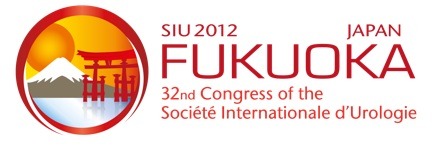
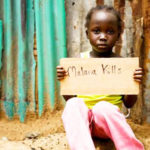


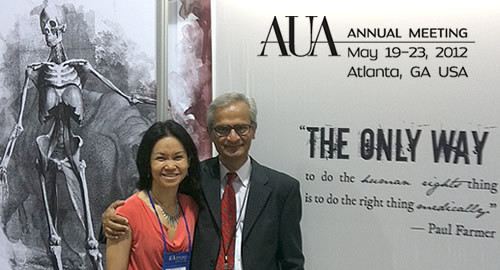
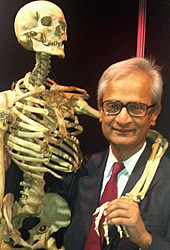
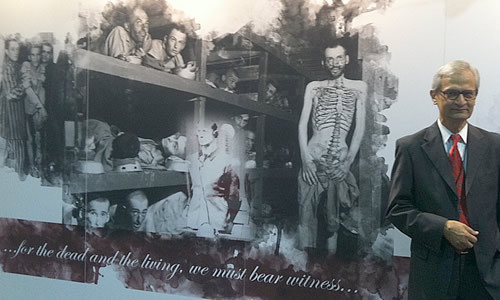

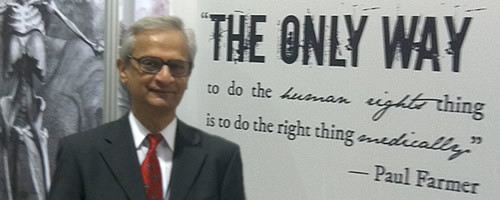
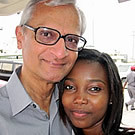 As I slowly tugged my suitcase through the airport, I heard the happy tinkling of laughter calling my name. It was my Haitian daughter Tamara, she embraced me in her arms. We chatted about her academic performance as she had just finished her second semester at the
As I slowly tugged my suitcase through the airport, I heard the happy tinkling of laughter calling my name. It was my Haitian daughter Tamara, she embraced me in her arms. We chatted about her academic performance as she had just finished her second semester at the 

